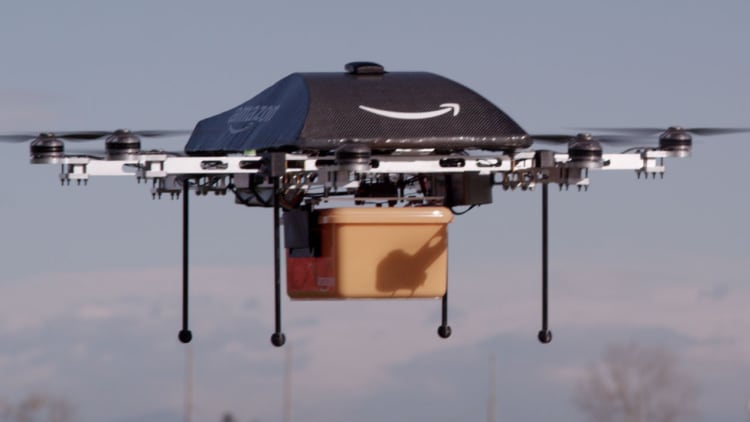From subscription boxes to membership programs, pay-to-play models have become a popular way for retailers to differentiate themselves and build customer loyalty — but only if they can prove their value.
As the marketplace for these types of services gets even more crowded — with start-ups offering recurring deliveries for everything from apparel to dog treats — subscription companies will need to show shoppers that their services are not only worth signing up for, but renewing.
But these fledgling companies aren't the only ones at risk of losing relevancy with shoppers. Established warehouse retailers are also feeling the heat from the explosive growth of Amazon Prime, which recruits millions of U.S. households for its $99 service each year.
Even as Costco's renewal rates have held steady near 90 percent, recent research from Cowen and Co. shows Amazon is wooing shoppers who once belonged exclusively to its warehouses. Cowen's research shows the same effect at Sam's Club.
This type of shift is an early indication that these deep-rooted retailers could be vulnerable down the road, as shoppers may look to consolidate the number of memberships they pay for, Leon Nicholas, chief insights officer at Kantar Retail, told CNBC.
"She may be opting out of the ones that seem more frivolous to her," he said.
A shakeout is already underway among the smaller subscription box players. A recent report by CB Insights mapped out funding at 57 start-ups selling subscriptions for physical goods. Collectively, they've raised more than $1.4 billion, the intelligence firm said.
But as more players enter the market, the success of these businesses has varied widely. Whereas Dollar Shave Club was acquired by Unilever for $1 billion, the celebrity-focused Beachmint site — which had raised nearly $75 million in four rounds of funding — was shuttered.

Data from the Black Friday shopping stretch shows that divide has persisted into the holiday season. Recurly, a firm that manages billing services for subscription businesses, found payment volume for 450 of its customers increased 17 percent on Black Friday and 16 percent on Cyber Monday.
Among the top performers, those growth rates surged 126 percent on Black Friday and 131 percent on Cyber Monday.
"The proliferation, I think, might start to get more limited just in terms of the pure number that we're talking about," Nicholas said.
Among the larger retailers, warehouse clubs including Sam's and Costco are also at risk, Nicholas said. Though Sam's Club does not report membership data, its recent acceleration in spending per transaction is still below the company's growth rate four years back, Kantar said. Meanwhile, traffic trends have turned negative.
Though Nicholas considers Costco best-positioned in the medium term, he's concerned that the retailer isn't doing enough to innovate. The company's core demographic is getting older, he said, and it will need to attract younger shoppers to fill that void.
Costco itself has admitted that it's been slow to adopt basic e-commerce capabilities, including the increasingly popular option that allows shoppers to pick up their online orders in store. However, on a call with analysts last week, management noted that it's making some progress attracting millennials.
Whereas the average U.S. Costco member used to be four years older than the general population, they are now roughly two years older. Analysts have likened part of Costco's success with millennials to the pull of off-price retailers like T.J. Maxx: the treasure hunt.
"You go in there, and the classic example [is], 'I went in to buy this, and I spent 400 bucks,'" Moody's analyst Charlie O'Shea said, calling the retailer "bulletproof" in any kind of economic scenario. "I find it very hard to find anything negative to say about Costco."
Indeed, UBS analyst Michael Lasser told investors last week that if the retailer were going to see an "intrusion" from various competitors, it would already be showing up in the company's renewal rates. In the recently ended quarter, Costco's retention rate held steady at around 90 percent.
Still, data from recurring Cowen surveys shows a growing overlap between warehouse club members and Prime subscribers, which could mean trouble down the road. Whereas 14.9 percent of Costco members belonged exclusively to that club in August 2013, only 9.8 percent of its members belonged only to Costco this August.
To be sure, Costco's overall membership base grew from 29.2 percent to 34 percent over that time, according to Cowen. But the number of subscribers who belonged exclusively to Amazon Prime jumped 9 points, to 16.2 percent. Prime's benefit to shoppers continues to grow as it adds new streaming and other capabilities.
As for other potential competitors — namely, Wal-Mart's $49 ShippingPass test — it's likely too little too late, Nicholas said.
"So many people who shop at Wal-Mart are already Amazon Prime members," he said. "They waited too long."


